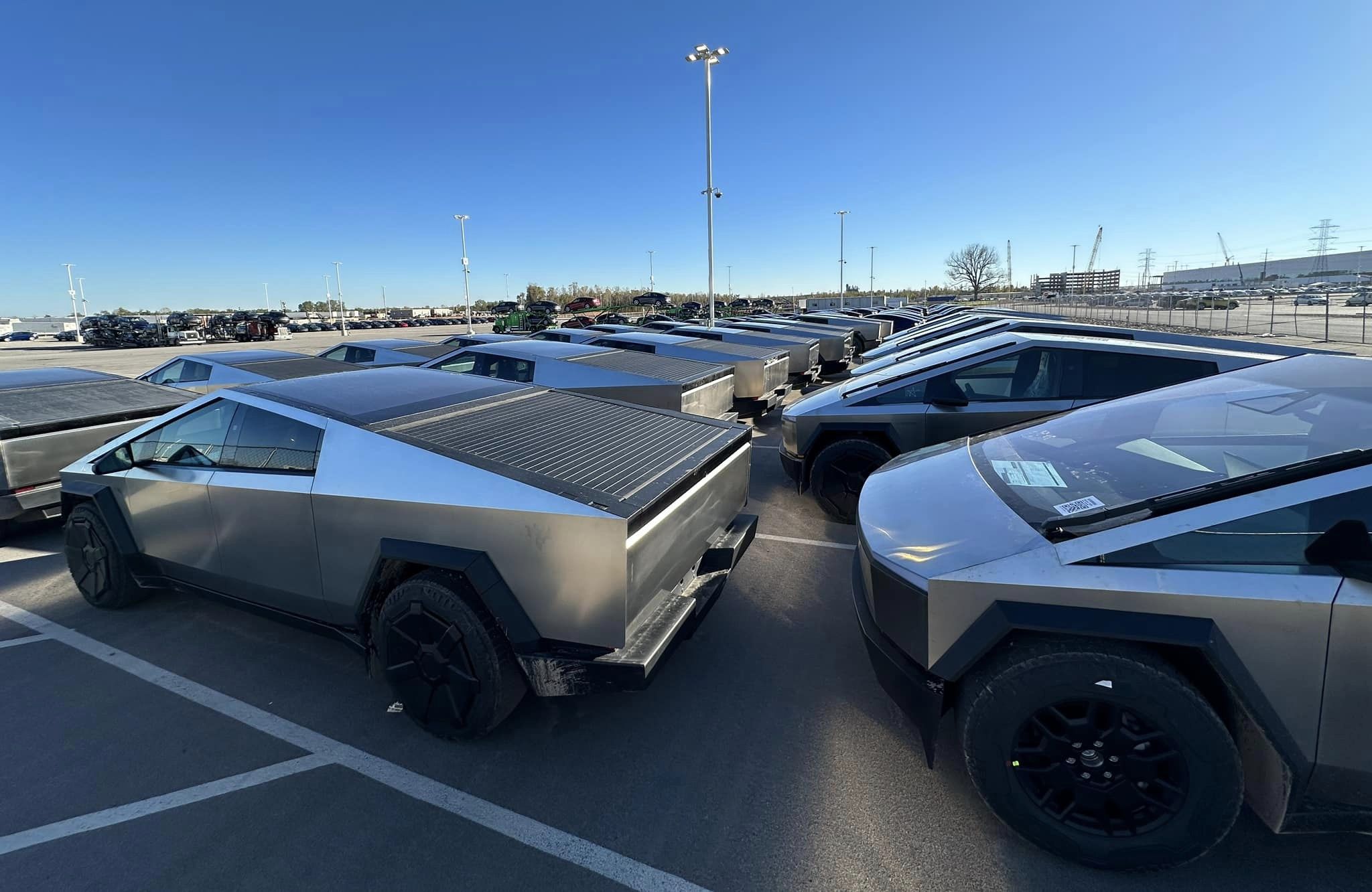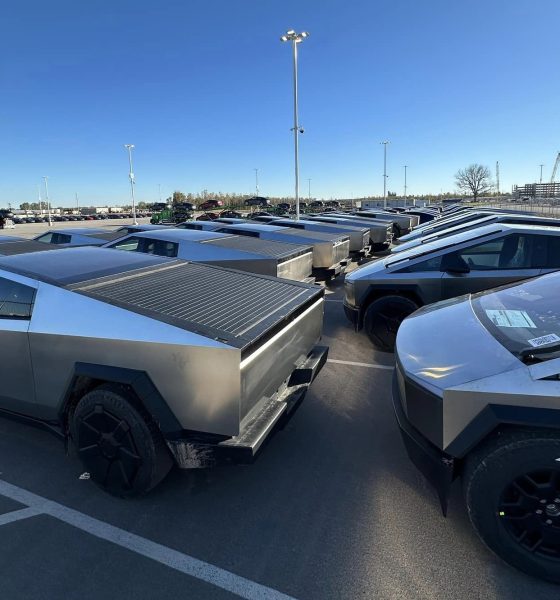

Investor's Corner
Tesla achieved its biggest goal for 2023, even with a lackluster quarter
Tesla achieved its biggest goal for 2023, as it confirmed yesterday it reached the 1.8 million unit goal it had for the year, even with a lackluster quarter that slowed production and deliveries.
It proves the two million unit delivery mark it had set internally was not too far-fetched. If it had not upgraded lines at its factories in Q3, it might have eclipsed that more lofty goal.
Coming into 2023, Tesla wanted 1.8 million vehicles produced and delivered to customers. It seemed to be on track after Q1 and Q2, as the first half of the year saw over 920,500 cars produced, putting the company clear of the full-year goal by roughly 40,000 units, if things remained steady.
However, Tesla had a few tricks up its sleeves. After launching the new Model 3 “Highland” in Europe, Asia, and the Middle East in October, there was an indication there could be greater sales as the year went on. The introduction of the new Model 3 helped the company get repeat sales as some drivers looked to have the updated version of the company’s all-electric sedan. Additionally, Tesla has reported growth on a quarterly basis, but that idea went to the side in Q3, at least temporarily.
Tesla explains impact of line upgrades that caused drop in production numbers
Tesla said in Q2 that it would need to update lines at several factories, including Fremont and Shanghai, which are major contributors to the company’s production volume. As the company moved forward with its production goals, it knew that a slow Q3 would make Q4 one of the most challenging yet.
Q3 saw a decrease from over 479,000 produced vehicles to just over 430,000, a sizeable decrease of just under 10 percent. It presented a major challenge for Tesla moving into Q4.
As Wedbush wrote in a note yesterday to investors, Tesla had to “come out swinging” in Q4, and in order to reach the 1.8 million mark, it would have to trigger demand through a variety of means. While Cybertruck deliveries began in late November, the impact the pickup had on delivery figures was abysmal, as volume production has yet to begin, and only a few handfuls of units made their way to customers.
Instead, Tesla incentivized vehicle purchases with a variety of tried-and-true promotions. Free Supercharging and $1,000 discounts to Cybertruck reservation holders were a few that deserve recognition. Price cuts also helped the Model S and Model X regain some of the momentum they once had, as they had the best quarterly numbers in five years.
The strategies helped Tesla gain some serious momentum in terms of sales, and it had its strongest quarter yet. Just over 5,000 units away from reaching 500,000 vehicles produced for the quarter, Tesla flexed its muscles to eclipse 1.8 million. The possibility that it could have reached two million units seems more unlikely, considering it was still over 150,000 units shy, and the difference between a normal Q3 and the Q3 that Tesla delivered this year was roughly 40,000 units.
Tesla could have been close to 1.9 million without the slow Q3, and eclipsing its yearly goal by 100,000 units would have proved to be a huge win. Moving forward, Tesla will introduce the Model 3 Highland in the United States soon, and it also will continue to ramp up production of the Cybertruck.
Moving forward, what is a number that is realistic for Tesla to make as a production goal for 2024?
I’d love to hear from you! How many cars do you expect Tesla to deliver in 2024? If you have any comments, concerns, or questions, please email me at joey@teslarati.com. You can also reach me on Twitter @KlenderJoey, or if you have news tips, you can email us at tips@teslarati.com.

Investor's Corner
Tesla stock closes at all-time high on heels of Robotaxi progress

Tesla stock (NASDAQ: TSLA) closed at an all-time high on Tuesday, jumping over 3 percent during the day and finishing at $489.88.
The price beats the previous record close, which was $479.86.
Shares have had a crazy year, dipping more than 40 percent from the start of the year. The stock then started to recover once again around late April, when its price started to climb back up from the low $200 level.
This week, Tesla started to climb toward its highest levels ever, as it was revealed on Sunday that the company was testing driverless Robotaxis in Austin. The spike in value pushed the company’s valuation to $1.63 trillion.
Tesla Robotaxi goes driverless as Musk confirms Safety Monitor removal testing
It is the seventh-most valuable company on the market currently, trailing Nvidia, Apple, Alphabet (Google), Microsoft, Amazon, and Meta.
Shares closed up $14.57 today, up over 3 percent.
The stock has gone through a lot this year, as previously mentioned. Shares tumbled in Q1 due to CEO Elon Musk’s involvement with the Department of Government Efficiency (DOGE), which pulled his attention away from his companies and left a major overhang on their valuations.
However, things started to rebound halfway through the year, and as the government started to phase out the $7,500 tax credit, demand spiked as consumers tried to take advantage of it.
Q3 deliveries were the highest in company history, and Tesla responded to the loss of the tax credit with the launch of the Model 3 and Model Y Standard.
Additionally, analysts have announced high expectations this week for the company on Wall Street as Robotaxi continues to be the focus. With autonomy within Tesla’s sights, things are moving in the direction of Robotaxi being a major catalyst for growth on the Street in the coming year.
Elon Musk
Tesla needs to come through on this one Robotaxi metric, analyst says
“We think the key focus from here will be how fast Tesla can scale driverless operations (including if Tesla’s approach to software/hardware allows it to scale significantly faster than competitors, as the company has argued), and on profitability.”

Tesla needs to come through on this one Robotaxi metric, Mark Delaney of Goldman Sachs says.
Tesla is in the process of rolling out its Robotaxi platform to areas outside of Austin and the California Bay Area. It has plans to launch in five additional cities, including Houston, Dallas, Miami, Las Vegas, and Phoenix.
However, the company’s expansion is not what the focus needs to be, according to Delaney. It’s the speed of deployment.
The analyst said:
“We think the key focus from here will be how fast Tesla can scale driverless operations (including if Tesla’s approach to software/hardware allows it to scale significantly faster than competitors, as the company has argued), and on profitability.”
Profitability will come as the Robotaxi fleet expands. Making that money will be dependent on when Tesla can initiate rides in more areas, giving more customers access to the program.
There are some additional things that the company needs to make happen ahead of the major Robotaxi expansion, one of those things is launching driverless rides in Austin, the first city in which it launched the program.
This week, Tesla started testing driverless Robotaxi rides in Austin, as two different Model Y units were spotted with no occupants, a huge step in the company’s plans for the ride-sharing platform.
Tesla Robotaxi goes driverless as Musk confirms Safety Monitor removal testing
CEO Elon Musk has been hoping to remove Safety Monitors from Robotaxis in Austin for several months, first mentioning the plan to have them out by the end of 2025 in September. He confirmed on Sunday that Tesla had officially removed vehicle occupants and started testing truly unsupervised rides.
Although Safety Monitors in Austin have been sitting in the passenger’s seat, they have still had the ability to override things in case of an emergency. After all, the ultimate goal was safety and avoiding any accidents or injuries.
Goldman Sachs reiterated its ‘Neutral’ rating and its $400 price target. Delaney said, “Tesla is making progress with its autonomous technology,” and recent developments make it evident that this is true.
Investor's Corner
Tesla gets bold Robotaxi prediction from Wall Street firm
Last week, Andrew Percoco took over Tesla analysis for Morgan Stanley from Adam Jonas, who covered the stock for years. Percoco seems to be less optimistic and bullish on Tesla shares, while still being fair and balanced in his analysis.

Tesla (NASDAQ: TSLA) received a bold Robotaxi prediction from Morgan Stanley, which anticipates a dramatic increase in the size of the company’s autonomous ride-hailing suite in the coming years.
Last week, Andrew Percoco took over Tesla analysis for Morgan Stanley from Adam Jonas, who covered the stock for years. Percoco seems to be less optimistic and bullish on Tesla shares, while still being fair and balanced in his analysis.
Percoco dug into the Robotaxi fleet and its expansion in the coming years in his latest note, released on Tuesday. The firm expects Tesla to increase the Robotaxi fleet size to 1,000 vehicles in 2026. However, that’s small-scale compared to what they expect from Tesla in a decade.
Tesla expands Robotaxi app access once again, this time on a global scale
By 2035, Morgan Stanley believes there will be one million Robotaxis on the road across multiple cities, a major jump and a considerable fleet size. We assume this means the fleet of vehicles Tesla will operate internally, and not including passenger-owned vehicles that could be added through software updates.
He also listed three specific catalysts that investors should pay attention to, as these will represent the company being on track to achieve its Robotaxi dreams:
- Opening Robotaxi to the public without a Safety Monitor. Timing is unclear, but it appears that Tesla is getting closer by the day.
- Improvement in safety metrics without the Safety Monitor. Tesla’s ability to improve its safety metrics as it scales miles driven without the Safety Monitor is imperative as it looks to scale in new states and cities in 2026.
- Cybercab start of production, targeted for April 2026. Tesla’s Cybercab is a purpose-built vehicle (no steering wheel or pedals, only two seats) that is expected to be produced through its state-of-the-art unboxed manufacturing process, offering further cost reductions and thus accelerating adoption over time.
Robotaxi stands to be one of Tesla’s most significant revenue contributors, especially as the company plans to continue expanding its ride-hailing service across the world in the coming years.
Its current deployment strategy is controlled and conservative to avoid any drastic and potentially program-ruining incidents.
So far, the program, which is active in Austin and the California Bay Area, has been widely successful.








